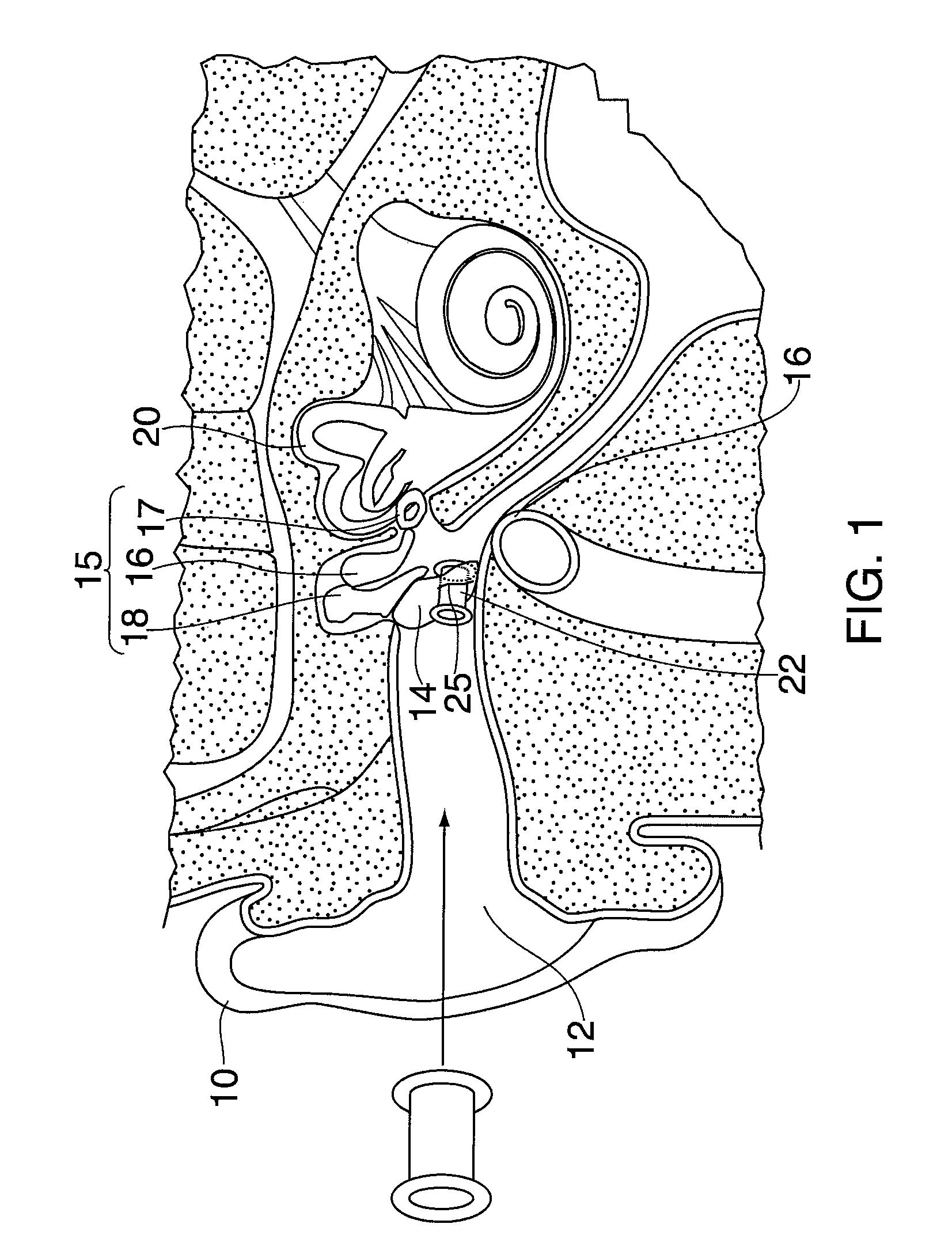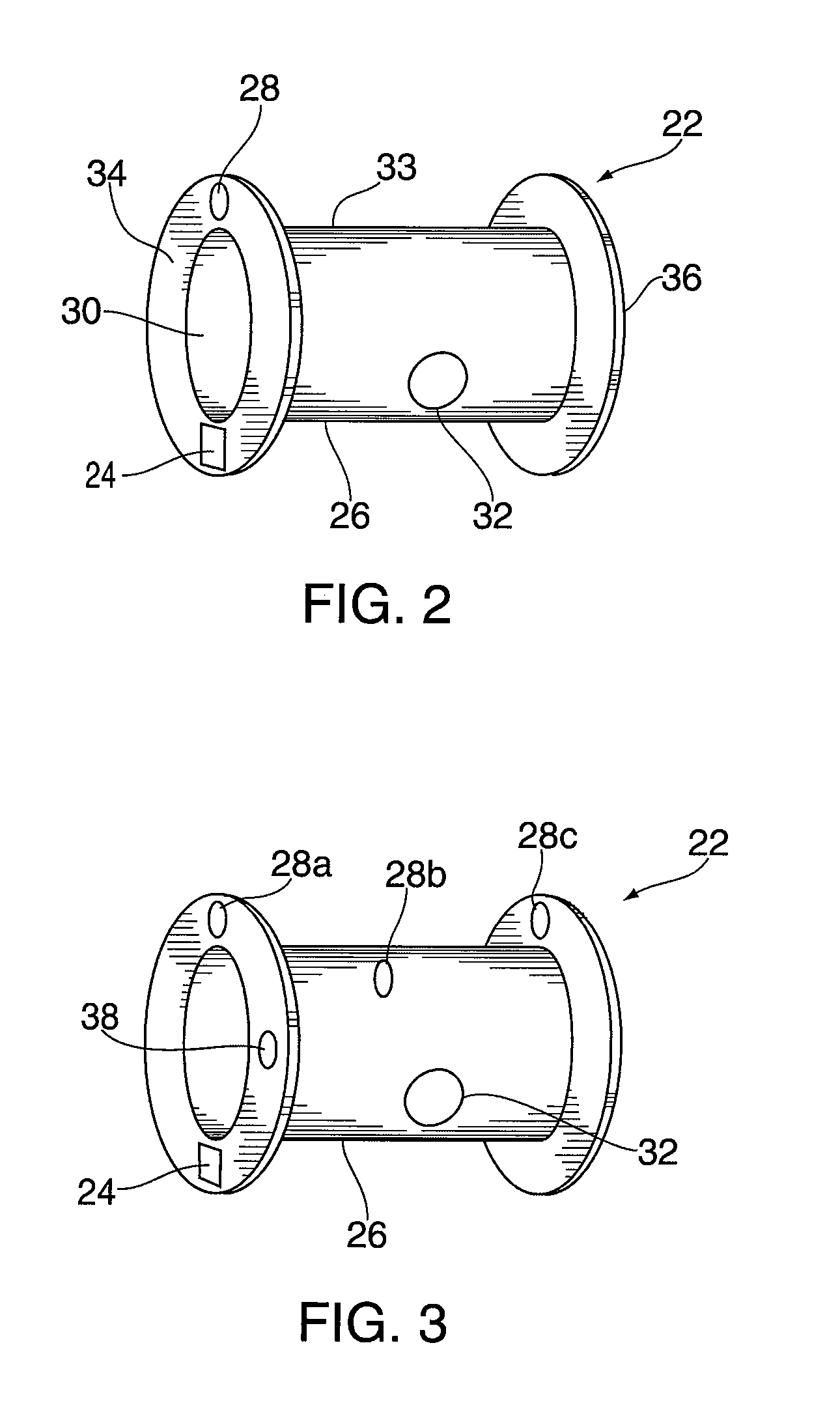Implantable hearing aid
a hearing aid and implantable technology, applied in the field of hearing aids, can solve the problems of ear infections, excessive ear wax production in the ear canal of the user's body, and large volume of external hearing aids, and achieve the effect of enhancing hearing
- Summary
- Abstract
- Description
- Claims
- Application Information
AI Technical Summary
Benefits of technology
Problems solved by technology
Method used
Image
Examples
Embodiment Construction
FIG. 1 is a cross-sectional schematic view of a hearing aid inserted through the tympanic membrane in an ear of a user. The ear includes an outer ear 10, an ear canal 12 coupled to the outer ear 10, a tympanic membrane 14 disposed near a distal end of the ear canal 12 from the outer ear 10. An ossicular chain 15, located in a middle ear and disposed on an opposite side of the tympanic membrane 14 from the outer ear 10, couples and amplifies vibrations from the tympanic membrane 14 to an inner ear having a spiral structure known as the cochlea 20. The cochlea 20 converts the vibrations into impulses to the brain. The structure of the outer ear 10 provides a “funnel” to direct and amplify sound waves into the ear canal 12.
The hearing aid 22 of the present invention can be inserted through the outer ear 10 into the ear canal 12 and at least partially through the tympanic membrane 14. The hearing aid 22 includes a microphone, an amplifier coupled to the microphone and at least one eardr...
PUM
 Login to View More
Login to View More Abstract
Description
Claims
Application Information
 Login to View More
Login to View More - R&D
- Intellectual Property
- Life Sciences
- Materials
- Tech Scout
- Unparalleled Data Quality
- Higher Quality Content
- 60% Fewer Hallucinations
Browse by: Latest US Patents, China's latest patents, Technical Efficacy Thesaurus, Application Domain, Technology Topic, Popular Technical Reports.
© 2025 PatSnap. All rights reserved.Legal|Privacy policy|Modern Slavery Act Transparency Statement|Sitemap|About US| Contact US: help@patsnap.com



